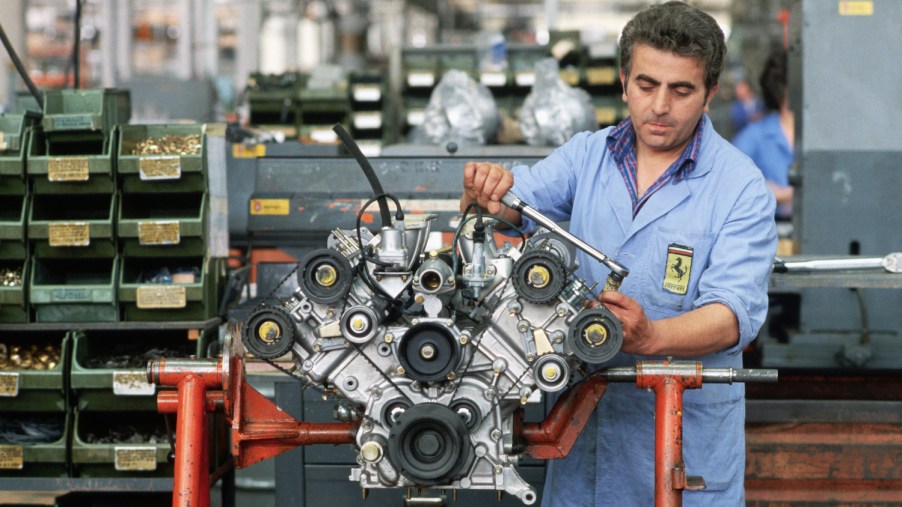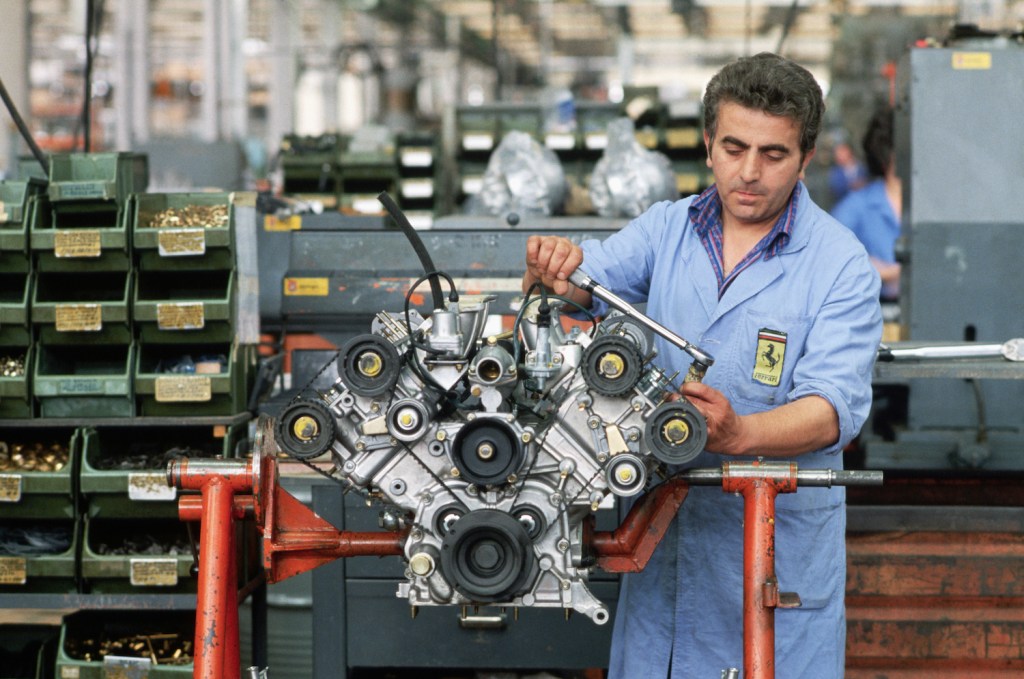
Here’s the Difference Between a Timing Belt and a Timing Chain
Your car has either a timing belt or a timing chain, and each requires different levels of maintenance. It’s tricky to differentiate the two since they both perform a similar task inside your car’s engine. So be sure to consult your owner’s manual and the internet as to which of these is actually in your engine. But here are the key differences, and the reason you should stay on top of their maintenance.

What is the purpose of a timing belt or timing chain?
Simply put, a timing belt or timing chain keeps the fuel injectors, air intake, and pistons synchronized. When a piston moves downwards, air and fuel should be going in. Then the piston goes up, a spark plug ignites the fuel, the piston is shot back down. Then, the piston rises back up to push all the remaining gas out of the engine and through the exhaust pipe.
All of this happens in a fraction of a second, and it has to be in perfect harmony. As the crankshaft brings the piston down, the fuel injectors need to be getting fuel in the cylinder. A timing belt or timing chain is connected to each of these components, in order to regulate when the valves allow air/fuel inside in relation to the pistons.
If your timing is off, even by a hair, it can cause serious engine damage. Incorrect ignition timing can lead to engine misfires, a result of unlit fuel. You’ll notice very quickly when this happens, as your engine will idle rough, or the car won’t work at all. That said, preventative maintenance can keep your car running smooth.
Changing a timing belt requires extensive maintenance
For starters, changing a timing belt is not a beginner’s DIY maintenance project, as it requires full disassembly of the engine. A timing belt is a reinforced rubber belt that connects to the valves and crankshaft of your engine. At some point in your car’s life, this timing belt will need to be replaced, and you don’t want it going out while driving. Otherwise, you could completely total the car.
Every car is different, but Sun Auto Service states the average time to get that belt replaced is around 100,000 miles. On older cars, one may want to change it closer to 60,000 miles. Likewise, when you change a timing belt, mechanics will also recommend changing your water pump, as well as other parts. Because all these parts must be synchronized, if the timing belt is replaced, all those parts should be as well.
Failure to maintain your timing belt can total your car. And while the repair bill will likely be over a grand, it’s a worthwhile expense if you want to keep the car running.
Timing chains are built to last the lifetime of the car
There are two main differences between a timing belt and a timing chain. For starters, a timing belt is made of rubber, whereas a timing belt is a metal chain. But more significantly, a timing chain is meant to last the lifetime of the car. In other words, you don’t need to change it along with a plethora of parts every 100k miles.
That said, in order to keep your timing chain in good shape, you need to properly maintain your engine. This means changing the oil at the manufacturer’s recommended intervals, or earlier if you can. The timing chain is lubricated by the engine oil, and if that isn’t changed, then the timing chain will be replaced.
And on high mileage cars, somewhere around 200k to 300k miles, you may want to replace the timing chain anyways. It’s a moving component, and it isn’t immune to failing. But if you’re taking good care of the car, with frequent engine oil changes, then the timing chain should work properly.
There’s a lot that goes into maintaining your car. And if you want to keep it running a long time, be sure to know what’s inside your engine, and how to properly maintain it.


